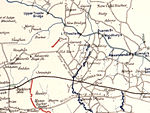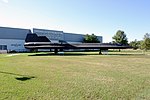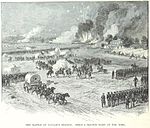Imperial Airlines Flight 201/8

Imperial Airlines Flight 201/8 was a charter flight by the United States Army to transport new recruits to Columbia, South Carolina for training. On November 8, 1961, the aircraft crashed as it attempted to land at Byrd Field, near Richmond, Virginia. This was the second deadliest accident in American history for a single civilian aircraft.The accident was investigated by the Civil Aeronautics Board (CAB), which attributed the cause to numerous errors committed by the flight crew, as well as poor management and improper maintenance by the airline. The CAB concluded that the "flight crew was not capable of performing the function or assuming the responsibility for the job they presumed to do."
Excerpt from the Wikipedia article Imperial Airlines Flight 201/8 (License: CC BY-SA 3.0, Authors, Images).Imperial Airlines Flight 201/8
Charles City Place,
Geographical coordinates (GPS) Address Nearby Places Show on map
Geographical coordinates (GPS)
| Latitude | Longitude |
|---|---|
| N 37.477655555556 ° | E -77.300544444444 ° |
Address
Charles City Place 4098
23231
Virginia, United States
Open on Google Maps






